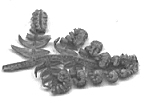Word VBA Development
Word Tips
> Word: Selecting the Current Page
> Office: The File Open Dialog Box
> Office: Sending E-Mail via Outlook
> Office: Clearing The Clipboard
> Word:Placing code within Normal.Dot
> Word: A Glossary Builder
> Word: Moving to the Next Bookmark
> Word: Formatting Numeric Table Data
> Word: Navigating Between Comments
> Word Tutorial: Developing A Template
> Word: Generating Consecutive Numbers
> Word: Template, Document and Startup Folders
Downloads
Memo With Database
This is an example of a simple Memo template. However this example shows how one could have a database which holds information on the sender. For example, in a company one may want to have details of the sender's name, phone and fax number. So, all one has to do is to select the initials from a list and then the rest of the work is done for the user. Of course this could be expanded to have details such as e-mail address and whatever. But, the idea of this code is to demonstrate what can be done; it is up to the developer to expand upon this to suit one's own requirements.
The code is discussed briefly within the Code Page
If there are any comments or suggestions for updates then please drop me a mail at malcolm.smith@dragondrop.com.
Letter Template - 1
Most of the documents which I use are based upon a template. When, for example, I am writing a letter I use this template. Please feel free to download and use it.
If there are any comments or suggestions for updates then please drop me a mail at malcolm.smith@dragondrop.com.
Letter Template - 2
An enhancement on the above letter template is that there is a button on the letter dialogue box which prints the recipient's address onto an envelope.
If there are any comments or suggestions for updates then please drop me a mail at malcolm.smith@dragondrop.com.
EMail With Outlook
Recently I was asked to help a company in California to create some code which would enable them to send some data from a bookmark in a template to a certain address by a button click. This template simply opens up an Outlook 2000 object, creates a mail object and then sends it.
If there are any comments or suggestions for updates then please drop me a mail at malcolm.smith@dragondrop.com.
Find & Replace Template
This is a simple template which was just knocked up in a matter of moments. All this does is maintain, in the document, a list of phrases which one wishes to change. This version lets the user search through a directory structure for the list of documents in which to search and replace.
This is the second version to satisfy some Word users' needs. If there are any suggestions for updates then please drop me a mail at malcolm.smith@dragondrop.com.
Clear Clipboard
A simple enough request; how does one clear the clipboard? This code does just this. Load this template into the Startup folder. This code uses the DataObject object and there is some discussion on this object and the code in the Code Page
If there are any comments or suggestions for updates then please drop me a mail at malcolm.smith@dragondrop.com.
Glossary Builder
Someone wanted to have some code which would copy the selected text from one document and into another document (the 'Glossary Document') where the insertion point was. The code is discussed briefly within the Code Page
If there are any comments or suggestions for updates then please drop me a mail at malcolm.smith@dragondrop.com.
New Document
Quite often the default New Document dialog box, as presented by Word, is a pain. If one has a load of different templates then it is quite possible that one doesn't want to go trawling through folders and large icon views of templates. This, then, is an alternative. What this offers is a simple dialog box which pops up when the user clicks on the new document icon or on File|New and is given a list of templates which are listed in the associated Templates.ini (attached). The code is discussed briefly within the Code Page
If there are any comments or suggestions for updates then please drop me a mail at malcolm.smith@dragondrop.com.
